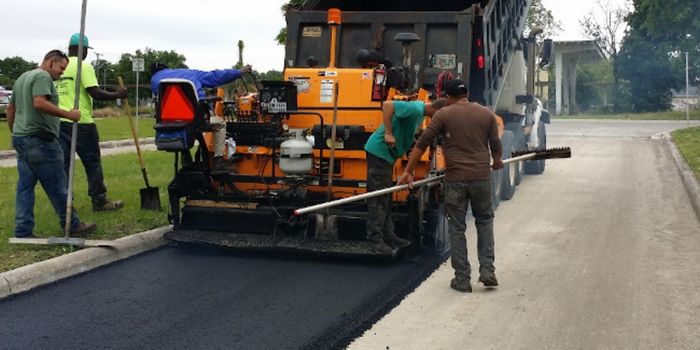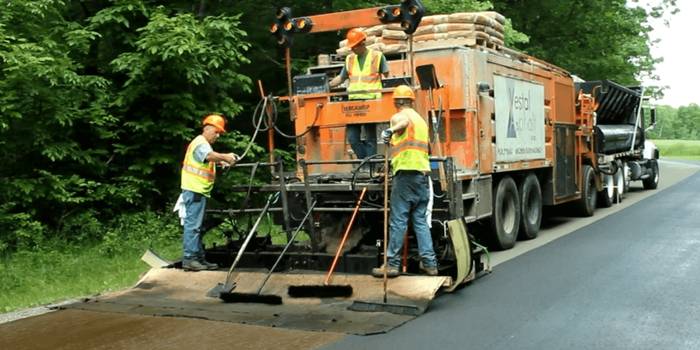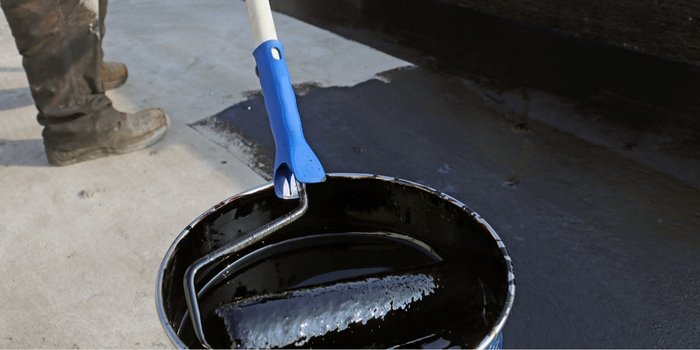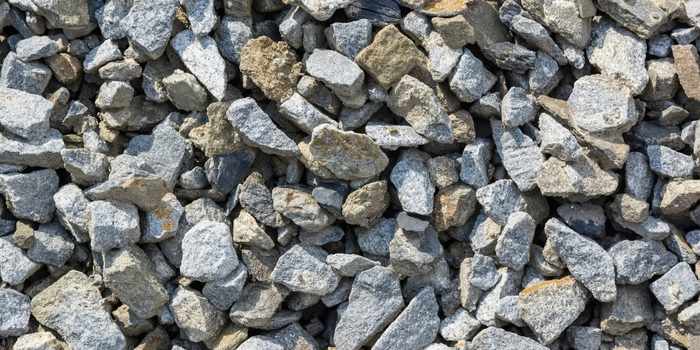Cracked, uneven and pothole-filled roads make driving uncomfortable & unsafe for you. To solve this problem, different road resurfacing techniques are used.
If you are a road project manager or contractor, you should know what road resurfacing is and how it is done. In today’s article, you will learn road reconstruction methods, materials and processes to restore damaged roads efficiently.
What is Road Resurfacing?
Road resurfacing is the maintenance process that adds a new top layer to the road. You have to resurface a road when you see the old pavement getting cracked, rough or damaged. You only need to replace the top layer instead of building the road again from the start. This makes the path smooth, reduces accident risk, and is safe for you to drive on.

Road Resurfacing Methods or Road Resurfacing Techniques
With different resurfacing methods, you can fix and renew a road’s surface. But, each method depends on the road’s condition, traffic load and your project budget.
Overlay Pavement
When you add a fresh layer of asphalt over the old road surface, it is called overlay pavement. This method is ideal when the base of the road is still strong but has cracks and wear on top.
In this repairing process, you need to clean and fix major damage. Then apply bonding materials, add asphalt layers and compact it.
Micro-Surfacing
Micro surfacing is damaged road treatment by applying a new coat. In this technique, a thin mix of asphalt and other materials (polymers, aggregates) is spread over the surface. These materials act as sealing agents and protect roads from water damage.
Additionally, it is a fast and affordable road resurfacing method which also keeps your road in good shape for years. However, it is more suitable when the highway surface is rough and you also notice tiny cracks on it.

Mill and Fill
This resurfacing technique is used for badly damaged roads and to increase path lifespan. You can not fix deep cracks with normal repairs. Firstly, you should remove the damaged top layer through milling.
After that, you can add a new layer of hot asphalt and press firmly. Once the surface is dry, you can use the road for driving.
Hot-in-Place
When the road surface has cracks, ruts and rough spots but the base is still strong, a hot in place method should be used. Because it works best for medium damages and eliminates full road replacement.
It involves heating and reusing the old asphalt directly on the road. For the overall process, special machines are required to heat the surface, mix it with new material and place it back.
Composite Resurfacing
In the composite method, the concrete base (PCC) is combined with a new asphalt layer on top of the road. You can cover damaged pavement layers with asphalt for a smooth finish.
This process is eco-friendly because you can recycle used materials. Instead of constructing new roads, composite resurfacing is mainly used to repair and restore damaged parts only.
Full Depth Recycling
Full depth recycling involves reusing the old road completely. You can crush existing layers, mixed with new binding material and compacted again. In this way, it creates a strong base for a fresh surface.
Plus, this method will be your ideal choice when the road is badly worn from top to bottom. Plus, it is eco-friendly as well as an economical reconstruction option.
Road Resurfacing Materials
Bituminous
Bituminous material is one of the most commonly used materials for resurfacing roads. It is made from asphalt. It fills cracks well and can handle traffic easily. Bitumen can fill cracks well and can handle low volume traffic easily.

Concrete Resurfacing
Concrete resurfacing uses a new layer of concrete to repair a road. You can use it when you want to build a strong and durable surface. You can use it for reconstruction of damaged roads, truck parks, loading areas and places where heavy containers are moved.
Asphalt
Asphalt is a soft and black material which you can use for a smooth road surface. Generally, it is suitable for resurfacing of highways and busy streets. The reason is that it lasts long and makes driving comfortable and quiet. Sometimes, you can reuse old asphalt to save resources.

Aggregates
Basically, aggregates are small stones, sand and gravel used in road resurfacing. You can combine it with asphalt and concrete to make the road strong and stable. They give strength to the surface and stop it from breaking under traffic load.

Hot Rolled Asphalt (HRA)
It is a strong road material that is made with the combination of asphalt with sand, stones and fillers. It has a water resistance property. You can use it for fixing busy roads, highways and airports.
Road Resurfacing Procedure (Road Resurfacing Process)
You must follow a step-by-step process to transform damaged and uneven roads into safe roadways.
1. Remove The Top Layer of Road
The first step in resurfacing is the removal of the top layer of the road. With the help of machines and equipment, you should clear the surface which is cracked and damaged. In this way, you can prepare a base for a fresh layer, so that it can stick well.
2. Surface Sweeping and Spraying
After you clear the top layer of road, you have to remove dust and debris. Then, a thin layer of liquid asphalt, bitumen or binder sprayed on the road top. This allows the new layer to bond properly and gives you an even pathway.
3. Sub-Base Placement
The sub-base is the strong layer produced by crushed stone, gravel & recycled concrete. Mostly, it is placed under the road’s top layer once you have cleaned it. Because most of the traffic weight is handled by this layer. You should remember that the thickness of the sub base will depend on the traffic level on the road.
4. New Surface Placement
A paving machine is required to add the layer of asphalt/concrete. This is the part where you will drive on, so it must be smooth and strong. You must spray hot asphalt evenly with the right thickness. In low-traffic places such as parking areas and farm tracks, you can use recycled materials to form this layer.
5. Compaction of Road /Road Rolling
Once a new layer is placed, you have to press it down with heavy machines such as road rollers. Rolling makes the road solid, stops cracks, removes bumps and is ready for traffic. But, you have to do it while the asphalt is still hot. Otherwise, it will be difficult for you to compact the asphalt layer properly.
6. New Road Line Marking
The last step of resurfacing is to paint new lines on the road with a road marking machine. These road markings are used to guide you, separate highway lanes and improve safety of drivers. Clear markings make driving easier and remind you to follow the rules of the road.
How Often Does a Road Need Resurfacing?
The time for resurfacing is based on how the road is used and maintained. For example: busy highways may need new layers after a few years. While quiet streets can last much longer. Following are some signs when road reconstruction must be done.
- Cracks and Potholes: These are the clearest indicators that your road needs resurfacing. Mostly, you will notice them when the surface starts breaking apart. If you ignore these, they can grow bigger, damage your vehicles and will be unsafe for driving.
- Uneven Surface: It means that the road is not flat for driving anymore. You feel shakes and bumps when you drive. In case you left it unfixed, it caused unsafe and uncomfortable riding.
- Water Pooling Issues: After rain, if you observe water stay on the road surface, then repair is required. Because, this issue makes driving risky and can damage the road faster.
How Long Does It Take To Resurface a Road?
Road resurfacing can take anywhere from a few days to several weeks. Mostly, it depends on the size and complexity of the road. New asphalt usually needs 24 to 48 hours before you can drive on it safely.
Also keep in mind that bad weather can slow this down. In addition, the reconstruction duration is also affected by road length, how damaged it is and the resurfacing technique you choose.
Road Work Sign Meaning (Sign Requirement During Resurfacing)
During road restoration, you should install construction signs to protect both drivers and workers. They tell you that repair is happening ahead. These signs must be placed before the work area to warn you to slow down and drive carefully. Road work signs keep traffic safe and help you reduce accidents near the work zone.
How Long Does Asphalt Resurfacing Last?
Generally, highway resurfacing can last 10 to 15 years on average. With proper maintenance such as sealing cracks, filling potholes and keeping water out, you can increase roadway lifespan to 25 years as well.
Difference Between Road Resurfacing and Surface Dressing
Below the difference table show you a contrast between road resurfacing and dressing of surface.
| Major Point | Road Resurfacing | Surface Dressing |
| Process | New layer of asphalt or concrete is placed on the road | Bitumen is sprayed and crushed stone are spread |
| Depth | Thick layer (may be many cm) | Very thin top coat |
| Application | For damaged roads with cracks, potholes and heavy wear | For roads in good condition but with minor problems that need protection |
| Cost | More expensive | Budget-friendly road repairing method |
| Durability | Can stay for 10 to 15 years | Last for 5 – 8 years |
| Construction Period | It takes more time to complete | Quick and simple process |
Road Resurfacing vs Repaving
Road resurfacing and repaving are both used to improve roads, but they are different in terms of their processes.
| Aspects | Road Resurfacing | Repaving |
| Method | Addition of new asphalt layer on top | Removes old pavement and rebuilds road |
| Fixes/repairs | Surface damage (cracks, potholes, uneven road) | Fix both surface and deep structural problems |
| Work Period | Quicker process than repaving | Takes more time |
| Investment | Less costly than repaving | More expensive |
| Traffic Delay | Minimal | Higher |
Road Resurfacing Machine
For the whole road resurface process, you need special machines to complete every step properly. With the help of different tools, you can remove the old layer, lay new asphalt and compact it evenly. Below are some examples of required equipment.
- Milling Machine
- Asphalt Paver
- Road Roller
- Cold Planer
- Asphalt Recycler
- Bitumen Sprayer
- Grader
- Dump Truck
4 Top Benefits of Road Resurfacing
After road renovation, you will get several advantages. The following are the main ones.
Extends Road Life
Over time, roads get damaged from traffic load and weather. When you rebuild the surface, it protects the base of the highway from further harm. As a result, roads can stay strong and last many more years.
Improves Driving Comfort
After path repair, you will have a smooth surface for riding and can avoid unexpected danger. You will feel no bumps under your car and can move in flow which makes your driving experience more quiet.
Increases Safety
Roads with cracks and potholes can be dangerous for all road users. Surface rebuilding resolves this issue and improves your safety while driving. There will be less chances of accidents and roads will be safe for drivers, cyclists and pedestrians too.
Saves Long-Term Costs
Small road problems can turn into extremely expensive repairs. With restoration of roads, you can set problems early and prevent further major damage. Because, when you replace a badly damaged road completely, it can be very expensive. On the other hand, only fixing small areas of the route is faster and cheaper.
Conclusion
You can see that road surface repair has a major role to keep your roads safe, smooth and long lasting. You should plan your road resurfacing project carefully and choose materials and methods according to the condition of the surface.
If you still have any confusion, you can contact our team. We will guide you and offer the best-quality products for road reconstruction and pavement.
Further Helpful Topics:
Road Construction Process – 6 Steps, Materials & Machinery
Construction Road Signs and Meanings – 25+ Signs To Know


-80x69.png)

